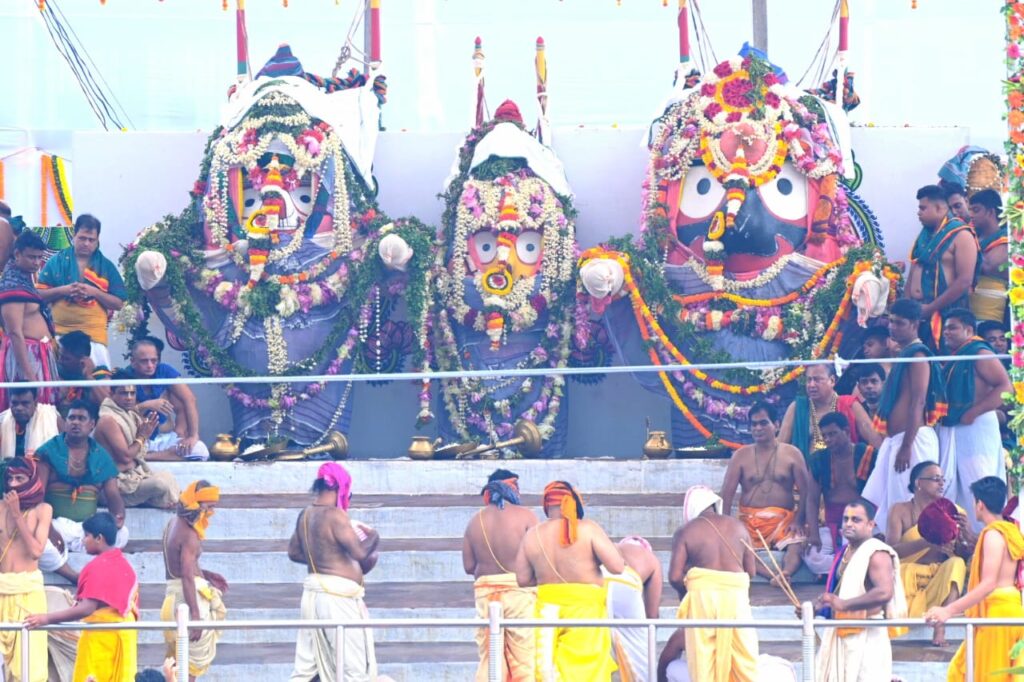PURI, Odisha – In a deeply revered annual tradition, Lord Jagannath and his siblings, Balabhadra and Subhadra, have entered the Anasara Ghara, marking a significant period of rest and rejuvenation. This sacred event, occurring after the Snana Yatra (the grand bathing festival), sees the deities retreat from public view for a fortnight, undergoing a ritualistic renewal believed to restore their divine vitality.
The term ‘Anasara’ derives from the Sanskrit words “Anavasara,” meaning no opportunity or not accessible. During this period, the deities are kept away from public darshan (viewing), as they are believed to fall ill after the extensive bathing ceremony. The Anasara Ghara, located within the Jagannath Temple in Puri, becomes their sanctuary, where elaborate rituals are performed to nurse them back to health.
According to the temple’s priests, the Snana Yatra, which involves bathing the deities with 108 pitchers of water drawn from the sacred well of the temple, leads to their perceived ‘illness.’ This ritual bathing is followed by Anasara, a fortnight-long period during which the deities are offered special herbal treatments and rituals to rejuvenate them. During this time, the Pati Mohapatra servitors take on the unique responsibility of tending to the deities, ensuring their proper care and conducting daily rituals in seclusion.
The Anasara period holds immense significance for devotees, symbolizing the natural cycle of life, illness, and recovery. It emphasizes the human-like qualities attributed to the deities, fostering a deeper connection between them and their devotees. The rituals performed during Anasara also underscore the rich cultural and spiritual heritage of Odisha, reflecting centuries-old traditions that have been meticulously preserved and practiced.
As the deities undergo their period of rest, they are adorned in a unique ‘Anavasara Vesha,’ a special attire made from natural herbs and pastes, believed to aid in their recovery. Devotees, although unable to see their beloved deities, participate in the rituals from a distance, offering prayers and eagerly awaiting the conclusion of this sacred period.
At the end of Anasara, the deities reappear in a rejuvenated form, marking the occasion of Netrotsava, also known as ‘Nava Yauvana Darshan,’ symbolizing their renewal and youthful vigor. This event is followed by the world-renowned Rath Yatra, where the deities are taken out in a grand procession, allowing devotees to partake in their divine presence once more.
The Anasara period, thus, not only reinforces the spiritual beliefs and traditions associated with Lord Jagannath and his siblings but also serves as a profound reminder of the cyclical nature of life, health, and divinity, deeply ingrained in the hearts of millions of devotees worldwide.
4o

